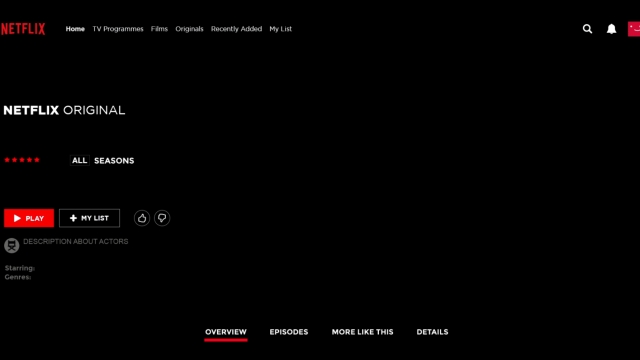
The Ultimate Guide to Optimizing Your IT Service: Boost Efficiency and Maximize Productivity
In today’s fast-paced digital world, optimizing your IT service has become more crucial than ever. With a myriad of technological advancements and growing customer expectations, businesses are constantly striving to boost efficiency and maximize productivity. An effective IT service not only ensures the smooth functioning of daily operations but also plays a significant role in driving growth and maintaining a competitive edge.
To achieve this, organizations must adopt a proactive approach by identifying potential bottlenecks, streamlining processes, and implementing innovative solutions. Whether you are a small startup or a large corporation, optimizing your IT service is a task that requires careful planning and continuous improvement. In this comprehensive guide, we will delve into the strategies and best practices that can help you optimize your IT service, transforming it into a well-oiled machine that powers your business success. So let’s dive in and explore the key areas that can make a significant difference in your IT service optimization journey.
1. Assessing Your IT Service
To optimize your IT service and achieve maximum efficiency, it is crucial to start by assessing your current state. This assessment will help you identify any areas that need improvement and create a solid foundation for implementing strategic changes.
Begin by evaluating your IT infrastructure and systems. Take stock of your hardware, software, and network components, ensuring they are up-to-date and compatible with your business needs. Assess the performance of your servers, storage systems, and networking devices to identify any bottlenecks or areas for improvement.
Next, conduct a thorough analysis of your IT team’s capabilities and resources. Assess their skill sets, training, and certifications to ensure they have the necessary expertise to support your IT service effectively. Identify any gaps in knowledge or training requirements, and develop a plan to address them.
Lastly, review your IT service management processes and workflows. Evaluate how incidents, problems, and changes are handled within your organization. Identify any inefficiencies, bottlenecks, or areas where automation could streamline operations.
By assessing your IT service comprehensively, you will gain valuable insights into its strengths and weaknesses. This analysis will serve as the foundation for optimizing your IT service and setting it on a path towards increased efficiency and productivity.
2. Implementing Optimization Strategies
In order to boost efficiency and maximize productivity within your IT service, it is crucial to implement optimization strategies that will streamline your operations. Here are three key strategies that can help you achieve these goals.
Standardize Processes: Establishing standardized processes is essential to ensure consistency and eliminate unnecessary variations in tasks. By defining clear guidelines and procedures, you can minimize errors, enhance communication, and reduce the time spent on rework. This not only improves overall efficiency but also allows your IT team to focus on more strategic initiatives.
IT Service provider in WisconsinLeverage Automation: Embracing automation can significantly enhance productivity within your IT service. By automating repetitive and time-consuming tasks, such as software updates, routine system checks, and data backups, you can free up valuable resources and enable your team to shift their focus to more complex and critical issues. Automation not only reduces human error but also accelerates the resolution time for IT incidents, ultimately improving service levels.
Continuously Monitor and Optimize Performance: Adopting a proactive approach to monitoring and optimizing performance is essential for maintaining high levels of efficiency within your IT service. Implementing robust monitoring tools and techniques allows you to identify bottlenecks, detect potential issues before they escalate, and optimize system performance. Regularly analyzing key performance metrics and making data-driven decisions enables you to continually improve your IT service delivery and ensure optimal productivity.
By implementing these optimization strategies, you can enhance the efficiency and productivity of your IT service, ultimately driving better results for your organization.
3. Monitoring and Maintaining Performance
In order to optimize your IT service and ensure its efficiency, it is crucial to closely monitor and maintain its performance. By regularly assessing and addressing any potential issues, you can maximize productivity and ensure a seamless experience for your users.
First and foremost, implementing a robust monitoring system is key. This allows you to have real-time visibility into the performance of your IT service and promptly identify any bottlenecks or areas of concern. By leveraging monitoring tools, you can track various metrics such as response times, resource utilization, and network latency, among others. This valuable data enables you to proactively address performance issues and make data-driven decisions for improvement.
Additionally, regular performance tuning is essential to maintain optimal operation of your IT service. This involves fine-tuning system configurations, optimizing hardware resources, and ensuring efficient code execution. By periodically reviewing and adjusting these aspects, you can eliminate any performance bottlenecks and create a more streamlined and reliable environment.
Furthermore, conducting routine maintenance tasks is crucial in ensuring the long-term performance of your IT service. This includes regularly applying software updates, patches, and security fixes to mitigate any vulnerabilities. It also involves monitoring and managing system resources such as disk space, memory usage, and database performance. By staying on top of these maintenance activities, you can proactively prevent potential issues and maintain a high level of performance.
In conclusion, monitoring and maintaining the performance of your IT service is vital for optimizing efficiency and maximizing productivity. By implementing a robust monitoring system, performing regular performance tuning, and conducting routine maintenance, you can ensure a seamless and reliable IT experience for both your team and end-users.




